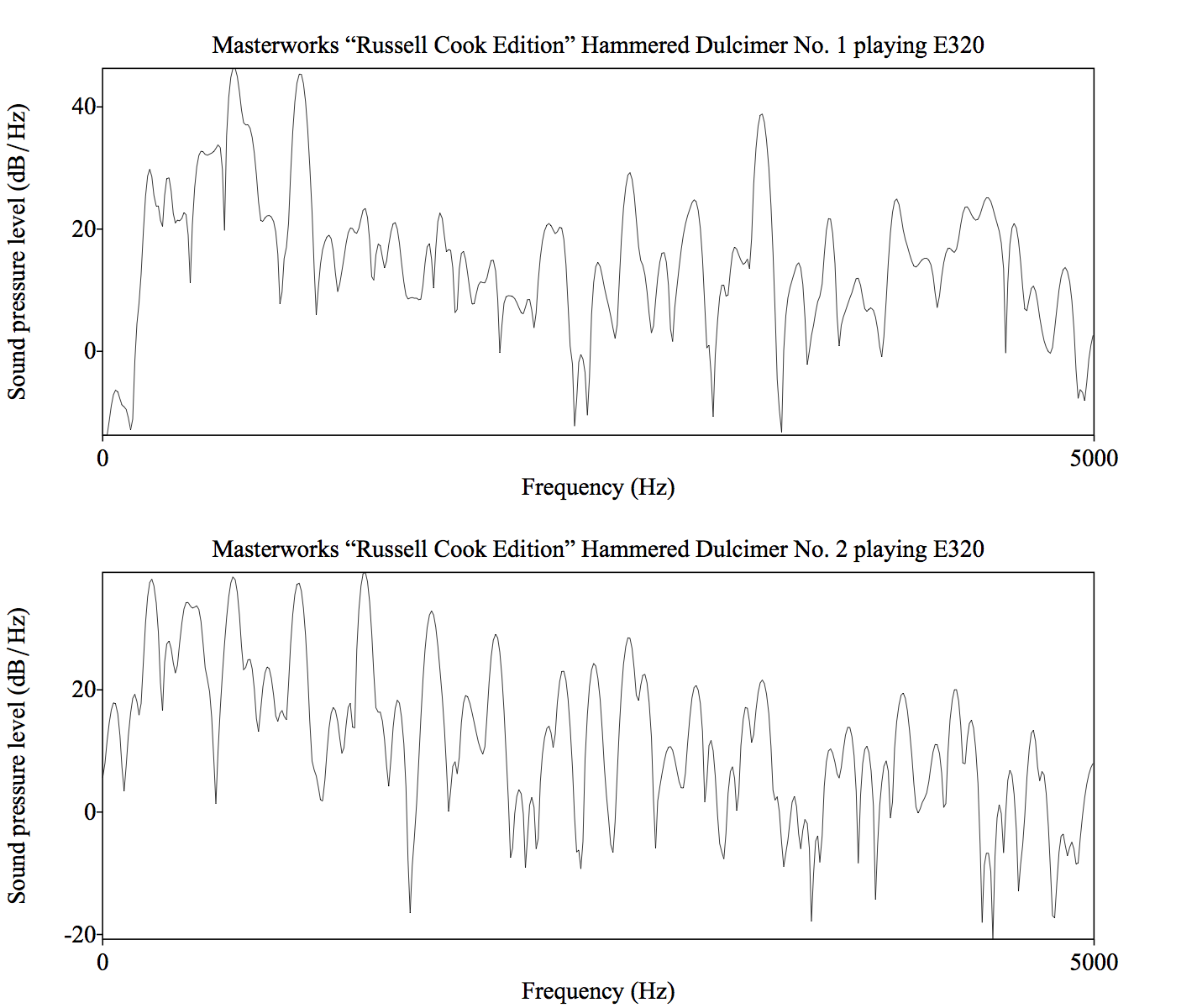Associate Teaching Professor of Linguistics at UC San Diego
Director of UCSD's Computational Social Science Program
Same instrument, different acoustical soul
This was originally posted on my blog, Notes from a Linguistic Mystic in 2012. See all posts
Recently, I’ve been reading about old Violins and how they are crafted, and this has made me think about the differences among modern Hammered Dulcimers, of which I’m an amateur player.
The first Hammered Dulcimer I ever owned (a Masterworks Russell Cook Edition) was very nice, and it had one characteristic odd note: E320 had an almost low-back-vowel-ey sound to it. Unfortunately, it also had a rattle inside the instrument which couldn’t be repaired, so it went back to their shop for diagnostics, and Russell (very generously) built me a new one, almost identical, save a few small changes.
That second dulcimer, my current dulcimer-love, is a beautiful instrument, but playing around this evening, I realized that that note doesn’t have that same quality (which I do now miss, ever-so-slightly), but I wasn’t sure what that quality was. Many of the rest of the notes sound nicer, so I don’t fault it, but it’s definitely different.
The Phonetics of Musical Instruments
This left me wondering, how do I determine that difference? Then, I remembered I’m a phonetics nerd, I do acoustical analysis of sounds for a living, so I decided to apply the same methodologies to my dulcimer(s).
First, I pulled up two recordings of the same song, one per dulcimer, new-and-old, in Praat. Then, I found the same timepoint of the same hit of that same note from both songs. I made a Fourier spectrum at that point for each of the two dulcimers for comparison (using the procedure described in Section 6.9 of Using Praat for Linguistic Research). This shows the amplitude (power) of all of the frequencies which make up the signal.
Below is the result:

(Also, for those interested, here’s the parts of the songs extracted with the odd note. The note in question is the third prominent note hit. Don’t mind the tempo change, my playing had improved in the two years between allowing me to play the song at faster speeds. Listen to the First Dulcimer and the Second Dulcimer.)
One can very clearly see how different these two notes are in terms of Timbre. The first dulcimer shows an almost vocalic set of strong resonances and weak ones. These resemble the resonances in vowel formants (see this spectrum of the vowel /ɔ/ for comparison), which explains why that note sounds so vowel-like to me. We can see that the second dulcimer shows a much more consistently tall set of harmonic peaks, with a much more consistent spectral tilt.
So, a little bit of phonetic analysis lets us see that although two instruments may be made by the same company, they may be the same instrument model, but they can have two fundamentally different voices.